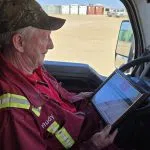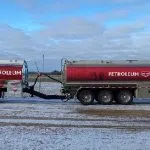
Wild pig discovery near Weyakwin alarming and shocking: U of S professor
A University of Saskatchewan professor is calling the discovery of wild pigs near Weyakwin alarming and shocking.
On Saturday, land user and Montreal Lake Cree Nation member Jarret Nelson was checking his traps along the northwest shore of Montreal Lake when a wild pig emerged from the forest. Surprised by the encounter, he directed his son to shoot and kill the animal.
“We still can’t believe it because I grew up on the trapline my whole life,” Nelson said. “I only ever heard of them down south and I never thought we would see anything like it up here.”
It was about two months ago when Nelson first began seeing evidence of wild pigs. He noticed sections of the muskeg were being ripped up and he initially thought it was done by caribou, which haven’t been sighted in the area for 20 years.


